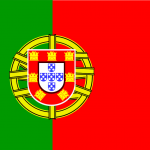myToys.ru online store personalization case study: 10% revenue uplift
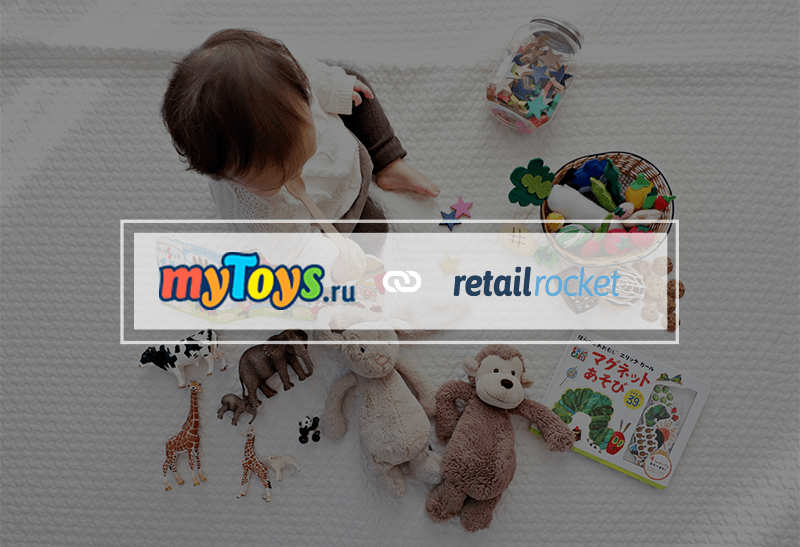
Childhood is a wonderful time both for parents and children. Today moms and dads appreciate the service convenience and product quality, especially for toys. More and more parents prefer to buy online instead of wandering around shopping centers in search of the perfect toy. So how can a retailer provide the right online service for such parents?
The German company myToys maintains the European toy market leadership for the last nineteen years and works with suppliers directly, providing customers with products of fine quality and fair price. myToys.ru website is visited by more than two million users monthly, the overall product range includes twenty five thousand SKU’s.
One of the company’s key goals is to provide excellent customer service. myToys.ru online store has implemented Retail Rocket personalized product recommendations on key website pages to achieve this goal. Thanks to this, customers quickly find what they need and save lots of time.
This case study is about myToys.ru online store 10% revenue increase through personalized recommendations implementation.
Product Page
Product page is a core sales funnel stage, so it has to be accurately designed. Each webpage element position directly impacts online store sales, and therefore its overall revenue.
Personalized recommendations implementation keeps gaining retailers’ focus. Meanwhile poor product page recommendations blocks design is the risk of pushing users to leave the website soon, forgetting of what they originally searched for.
The goal of personalized recommendations implementation was sales boost and triggering customers to purchase more. Let’s take a closer look at how it worked out.
Case 1. Choosing myToys.ru online store merchandising algorithm and configuring the most efficient placement
We explored various merchandising algorithms efficiency to fine-tune personalized recommendations performance on myToys.ru product page. After that, we executed the experiment using the A/B testing approach: all website visitors were randomly split into 5 segments in real time.
Two recommendations blocks were shown to the first user segment: similar products (on top) and related products (below product details).

Two blocks were also shown to the second segment: related products (on top) and similar products (below product details).
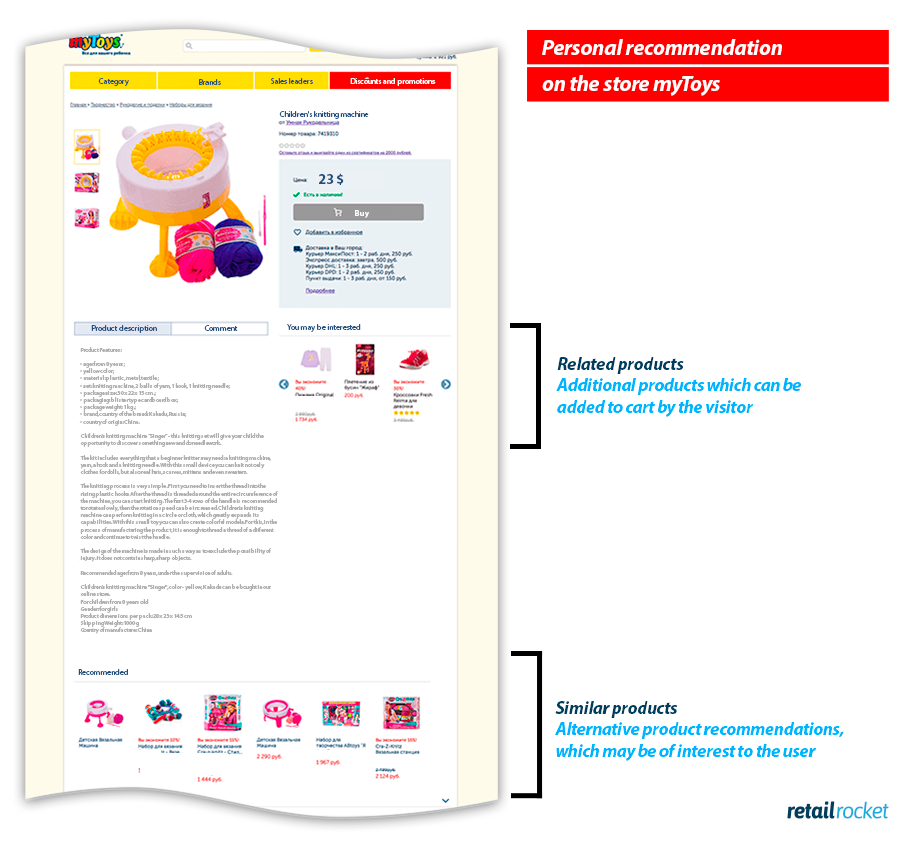
The third segment saw two recommendations blocks with a slider scrolled every ten seconds automatically: similar products (on top) and related products (below product details).
The fourth segment saw two recommendations blocks with slider scrolled every ten seconds automatically: related products (on top) and similar products (below product details).
The fifth segment was the control group: no recommendations were demonstrated.
Results
Following the outcome of the A/B testing, the following results were obtained:
|
Segment |
Conversion increase | Change in average order value |
Revenue increase estimate |
| Similar products (above) and related products (below) |
+5,37% |
-1,37% |
+3,92% |
| Related products (above) and similar products (below) |
+7,00% |
+2,62% |
+9,80% |
| Blocks with slider autoscroll: similar products (above) and related products (below) |
+5,22% |
-1,47% |
+3,67% |
| Blocks with slider autoscroll: related products (above) and similar products (below) |
+5,90% |
-0,41% |
+6,33% |
| Control group |
– |
– |
– |
According to the test results, the use of “Related products (on top) and similar products (below product details)” mechanics without slider on myToys.ru Product Page recommendations block increases the conversion rate by 7% with 96,7% statistical significance. It gives the 9,8% predicted revenue growth taking into account the 2,6% average order value increase.
Case 2. Related products algorithms tuning on myToys.ru product page
As we identified the most efficient recommendations blocks placement, we could go on with the related products algorithm configuration. We executed the experiment using the A/B testing approach: all website visitors were randomly split into three segments in real time.
Non-personalized related products were shown to the first visitor segment:

Related products with most popular items excluded were shown to the second segment.

Related products from categories different from the category of current product were shown to the third segment. We used it as the control group.
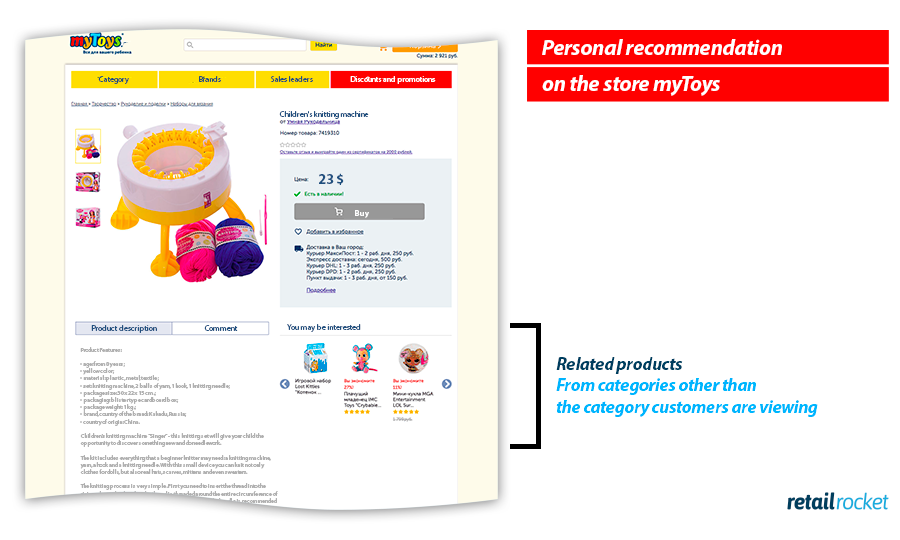
Results
Following the outcome of the A/B testing, the following results were obtained:
| Segment | Conversion increase |
| Related products (non-personalized) |
-2,40% |
|
Related products with most popular items excluded |
+3,18% |
| Related products from categories different from the category of current product | – |
According to the test results, the use of “Related products with most popular items excluded” mechanics in myToys.ru Product Page recommendations block increases the conversion rate by 3,18% with 93,6% statistical significance.
Cart page
Each user who puts products in his online cart faces the final choice: “To purchase or not to purchase?”. That is why fine online cart functionality should be intuitive and contain no odds at all. The easier and more pleasant the purchase process is, the more the customer will be willing to finish his order.
Actually, it is up to you to exceed customer’s expectations with an appropriate offer. For example, by implementing personalized product recommendations. These recommendations work in an online cart just like an accessories stand on an offline cash point, capturing the customer’s attention by showing some nice little things and so increasing the average order value.
Case 3. Related products algorithms tuning on myToys.ru cart page
To find a recommendations algorithm which fits the myToys.ru cart page best, we explored the recommendations performance using the A/B testing approach: all website visitors were randomly split into four segments in real time.
Non-personalized related products were shown to the first visitor segment.

Related products from categories different from the category of current product were shown to the second segment.
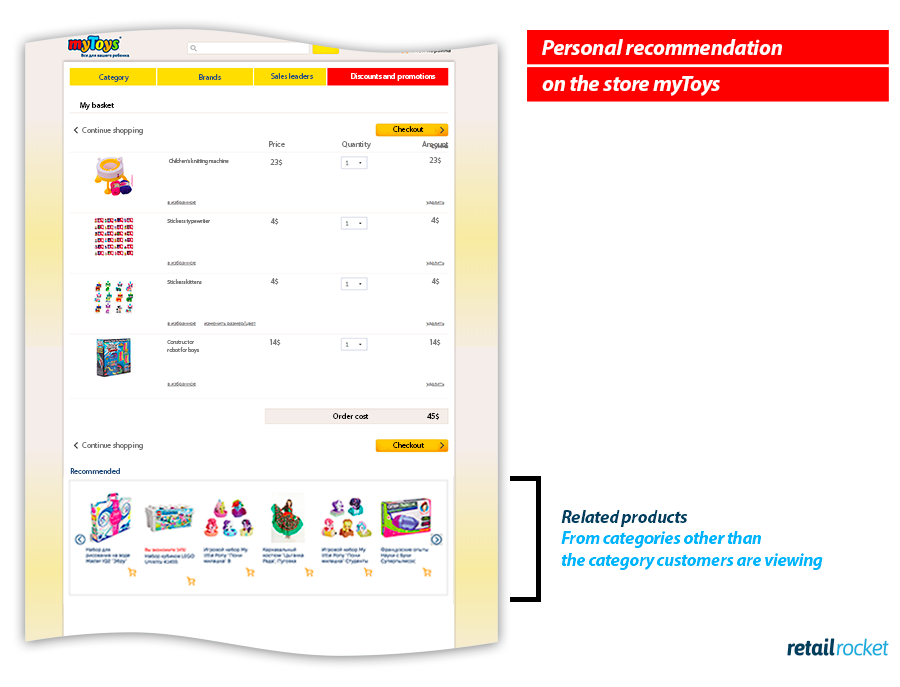
The third visitor segment was the control group: no recommendations were shown.
Results
Following the outcome of the A/B testing, the following results were obtained:
| Segment | Conversion increase | Change in average order value |
Revenue increase estimate |
| Related products (non-personalized) |
-1,44% |
+4,59% |
+3,08% |
|
Related products from categories different from the category of current product |
-3,90% | +0,25% |
-3,66% |
| Control group |
– |
– |
– |
According to the test results, the use of “Related products (non-personalized)” mechanics on myToys.ru Product Page recommendations block increases the average order value by 4,6%. Furthermore, it gives the 3,1% predicted revenue growth taking into account the slight conversion rate decrease.
Case 4. Personalized related products algorithms tuning on myToys.ru cart page
On the next stage, we continued searching for the best related products algorithm and so we tested some additional recommendations mechanics.
We explored the recommendations performance using the A/B testing approach: all website visitors were randomly split into four segments in real time.
Related products personalized by visitors’ interests were shown to the first segment.
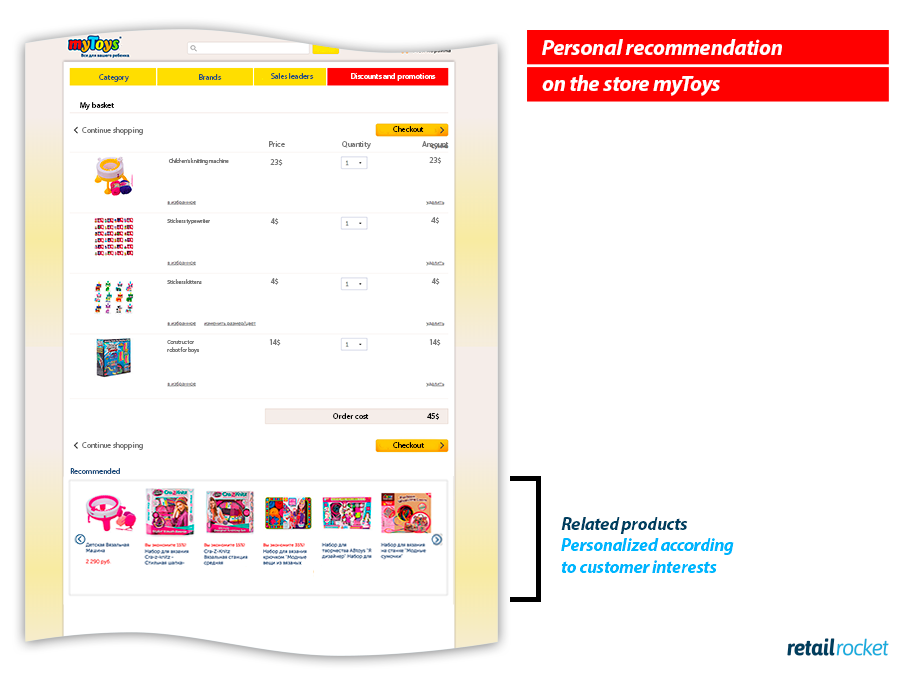
Related products personalized by visitors’ interests with most popular items excluded were shown to the second segment.
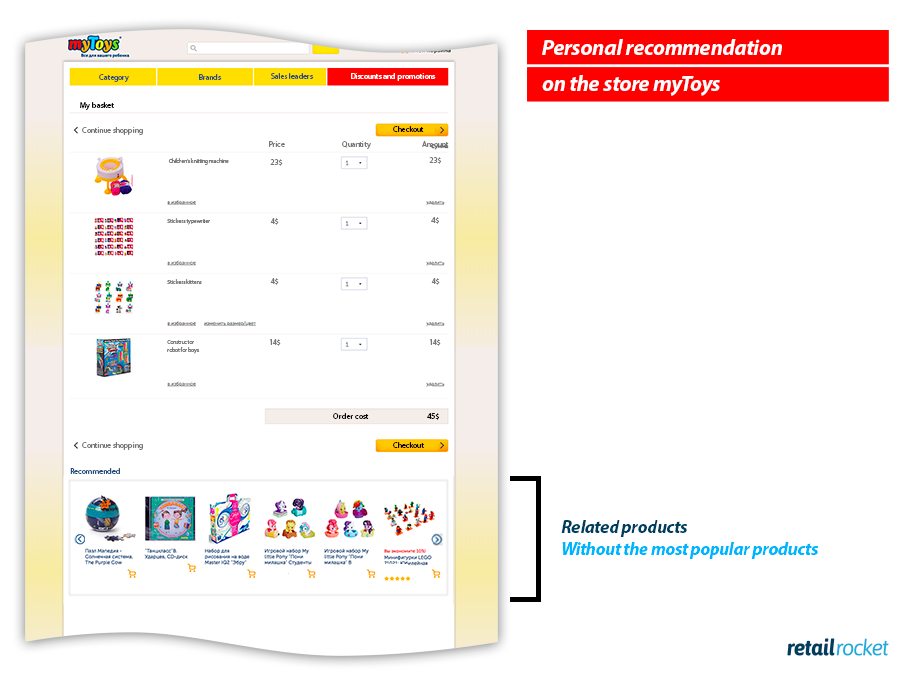
Non-personalized related products were shown to the third segment. We used it as the control group as this algorithm showed the best performance in the previous test.
Results
Following the outcome of the A/B testing, the following results were obtained:
| Segment | Conversion increase | Change in average order value | Revenue increase estimate |
|
Personalized related products |
-0,21% | +3,28% |
+3,06% |
|
Personalized related products with most popular items excluded |
+2,28% | +5,29% |
+7,68% |
| Control group |
– |
– |
– |
According to the test results, the use of “Personalized related products” mechanics on myToys.ru Product Page recommendations block increases the conversion rate by 2,3% with 79% statistical significance. Beside this, it gives the 7,7% predicted revenue growth taking into account the 5,3% average order value increase.
myToys.ru comments
 «We continuously test our recommendations blocks algorithms, positioning and conducting A/B testing with Retail Rocket team. We choose configurations that showed the best performance in terms of RPV according to test results. For example, we achieved both conversion and average order value increase by swapping recommendations blocks on the product page. Now we are planning to configure recommendation blocks for the mobile version of the website and then define the best algorithms and blocks quantity for mobile users».
«We continuously test our recommendations blocks algorithms, positioning and conducting A/B testing with Retail Rocket team. We choose configurations that showed the best performance in terms of RPV according to test results. For example, we achieved both conversion and average order value increase by swapping recommendations blocks on the product page. Now we are planning to configure recommendation blocks for the mobile version of the website and then define the best algorithms and blocks quantity for mobile users».
Olga Popova, Head of Development at myToys online store







